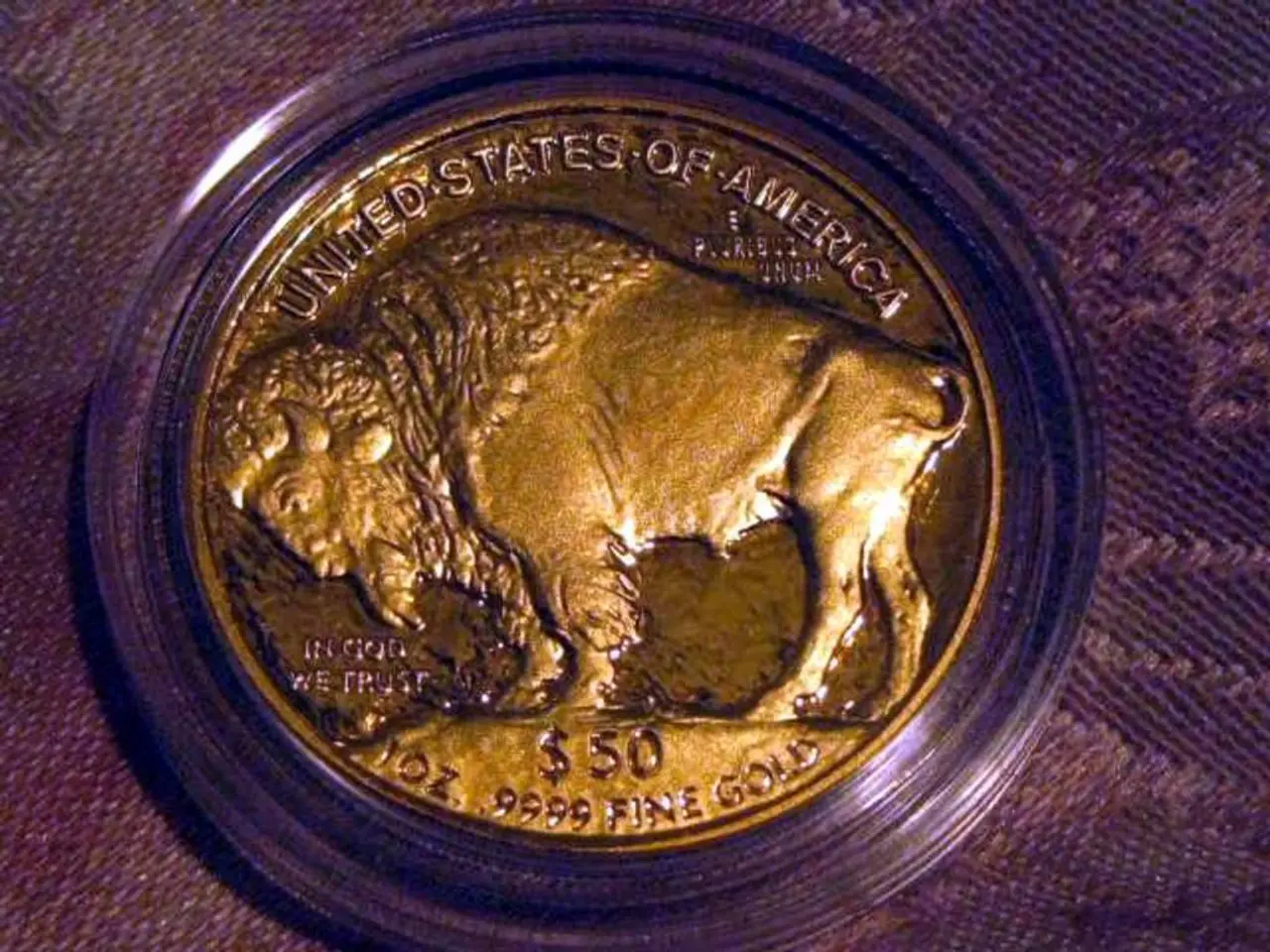Gold reserves in Belarus have reached unprecedented heights.
Belarus' gold and foreign exchange reserves (G&FR) have reached an all-time high of $11.94 billion, marking a significant increase of over $3 billion since the beginning of 2025. This surge was primarily due to a $389.8 million growth in foreign currency reserves and a $22 million increase in gold reserves, according to official data.
The increase in G&FR is a testament to the country's prudent financial management and its efforts to ensure economic stability and resilience. These liquid assets play a crucial role in safeguarding against external shocks, supporting monetary and fiscal policies, and maintaining monetary stability.
Gold Reserves serve as a safe, physical asset with zero counterparty risk, a hedge against currency depreciation or inflation, and protection in times of financial system disruptions. Gold's limited supply and ability to be revalued on balance sheets also make it an attractive addition to a country's reserves.
Foreign Exchange Reserves, on the other hand, provide a pool of liquid assets to manage exchange rate volatility, ensure a sufficient stockpile of foreign currencies to meet international payment obligations, and help maintain financial market confidence and creditworthiness.
The surge in foreign currency reserves was caused by a $273.5 million surplus of currency supply over demand in the entire market. This surplus could be attributed to a decrease in imports, an increase in exports, or a reduction in foreign investments.
In critical situations, gold reserves can be used to pay social obligations like pensions, wages, benefits, and healthcare funding. G&FR can also be used to cover external public debt, conduct currency interventions to control the exchange rate of the national currency, and stimulate demand by increasing the money supply, lowering interest rates on loans.
The strategic diversification of G&FR away from U.S. dollar dominance has been observed in recent trends, with increased central bank gold buying, especially in emerging markets. This shift is driven by geopolitical and economic considerations, inflation hedging, and safeguarding monetary sovereignty.
As Belarus continues to manage its economy effectively, its G&FR will undoubtedly remain a crucial asset in maintaining its economic resilience and monetary stability in an uncertain global economic and geopolitical environment.
[1] [Kanabar, A. (2025). Central Bank Gold Buying: A Strategic Shift in Emerging Markets. The Economist.] [2] [International Monetary Fund. (2025). Balance of Payments and International Investment Position Manual, Sixth Edition.] [3] [Federal Reserve Bank of St. Louis. (2025). Gold as an Asset Class: A Look at Central Bank Holdings.] [4] [World Gold Council. (2025). Central Bank Gold Reserves: An Overview.] [5] [Bank for International Settlements. (2025). Gold and Monetary Policy.]
- The strategic diversification of Belarus' gold and foreign exchange reserves (G&FR) has been observed in recent trends, with increased central bank gold buying, particularly in emerging markets, as a response to geopolitical and economic considerations, inflation hedging, and safeguarding monetary sovereignty.
- Gold reserves, one component of G&FR, serve as a safe, physical asset with zero counterparty risk, providing protection in times of financial system disruptions, and can be used to pay social obligations, cover external public debt, and lower interest rates on loans in critical situations.




